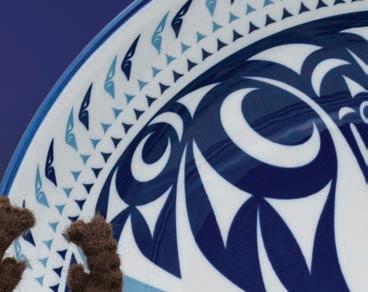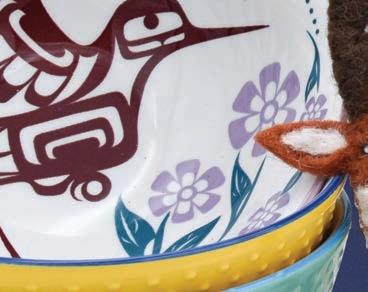


















James D. Thornton, Chair
Cover
Ernst Ludwig Kirchner. Flower Beds in the Dresden Gardens. c. 1910. Baltimore Museum of Art, Gift of Curt Valentin Gallery, Inc., BMA 1953.33
Clair Zamoiski Segal, Immediate Past Chair
Darius Graham, Vice Chair
Elizabeth Hurwitz, Vice Chair
Vacant, Secretary
Paul Oostburg Sanz, Treasurer
Ellen Dame, Vice President
Amy Gould, Vice President
Pat Lasher, Vice President
John Meyerho Vice President
Steven Pulimood, Vice President
Katherine Schulze, Vice President
David Wallace, Vice President
EXECUTIVE COMMITTEE
James D. Thornton, Chair
Clair Zamoiski Segal, Immediate Past Chair
Darius Graham, Vice Chair
Elizabeth Hurwitz, Vice Chair
Vacant, Secretary
Paul Oostburg Sanz, Treasurer
Ellen Dame, Vice President
Amy Gould, Vice President
Pat Lasher, Vice President
John Meyerho Vice President
Steven Pulimood, Vice President
Katherine Schulze, Vice President
David Wallace, Vice President
Virginia K. Adams
Sam Callard
Amy Elias
TRUSTEES
Derrick Adams
Virginia K. Adams
Michael Brown
Adam Burch
Sharon Butler
Sam Callard
Beverly Bentley Carroll
Ellen R. Dame
Amy Elias
Nupur Parekh Flynn
Joanne Gold
Amy Gould
Darius Graham
Kim Mumby Green
Nancy Hackerman
Pamela Hoehn-Saric
Elizabeth Hurwitz
Sherrilyn Ifill
Lori N. Johnson
Patricia Lasher
George McCulloch
John Meyerho
Sheela Murthy
Antoinette Peele
George Petrocheilos
Steven Pulimood
Paul Oostburg Sanz
Mark Saudek
Katherine Schulze
Clair Zamoiski Segal
Lynn Selby
Michael Sherman
Stuart O. Simms
Anne L. Stone
James D. Thornton
David Wallace
John Waters
HONORARY TRUSTEES
Alexander C. Baer
Rheda Becker
Constance R. Caplan
Kathryn (Lynn) Deering
Janet E. Dunn
Sandra Levi Gerstung
Katherine M. Hardiman
Margot W.M. Heller
Louise P. Hoblitzell
Freeman A. Hrabowski III
Mary B. Hyman
Patricia H. Joseph
Susan B. Katzenberg
Jeanette Kimmel
Frederick Singley Koontz
Je rey A. Legum
Amy Frenkil Meadows
James S. Riepe
Frederica K. Saxon
Jean Silber
Louis B. Thalheimer
David Warnock
Ellen W.P. Wasserman
NATIONAL TRUSTEES
Sylvia de Cuevas
Monroe Denton
Barbara Duthuit
Phillips Hathaway
Joseph Holtzman
Edward S. Pantzer
EX-OFFICIO TRUSTEES
The Honorable Bob Cassilly
The Honorable Edward Rothstein
The Honorable John Olszewski
The Honorable Steuart Pittman
The Honorable Wes Moore
The Honorable Bill Henry
The Honorable Calvin Ball
The Honorable Brandon M. Scott
The Honorable Nick Mosby
Dean Christopher Celenza, KSAS
Contributors ANNE BROWN
Design and Production NICOLE MILLER
Image Services & Rights ANA SALAS
Images of BMA Sta CHRISTOPHER MYERS
Baltimore Museum of Art 10 Art Museum Drive
Baltimore, MD 21218-3898
HOURS & ADMISSION
Wednesday, Friday through Sunday: 10 a.m. to 5 p.m. Thursday now open from 10 a.m. to 9 p.m.
Closed Mondays and Tuesdays, New Year’s Day, Juneteenth, July 4, November 23, Thanksgiving, and Christmas Day. Free general admission—for everyone, every day!
There may be a charge for certain special exhibitions. BMA Members receive unlimited free admission to ticketed exhibitions.
Ongoing support for free admission at the BMA has been provided through generous endowment gifts from the Cohen Family Fund for Free Admission, Lord Baltimore Capital Partners, LLC, Mary J. and James D. Miller, the James S. Riepe Family Foundation, and the DLA Piper Fund.
The BMA would like to thank the following donors for their combined generosity: City of Baltimore, Citizens of Baltimore County, and Howard County Government and Howard County Arts Council. Major support is also provided in part by the Maryland State Arts Council.
ACCESSIBILITY
The Zamoiski East Entrance, the Museum, and the Sculpture Garden are wheelchair accessible. A limited number of wheelchairs are available for use free of charge. Van-accessible parking spaces are available in the BMA East and West Lots. Please check in at the Welcome Desk in the Lobby upon arrival.
TTY/HCO
1-800-735-2964
artbma.org
Facebook.com/artbma
Instagram.com/baltimoremuseumofart
Twitter.com/artbma
YouTube.com/artbma
CONTACT US
Membership: 443-573-1800
General Information: 443-573-1700
General operating support is provided in part by the City of Baltimore, Maryland State Arts Council, citizens of Baltimore County, and the Howard County Government and the Howard County Arts Council.
The Citizens of Baltimore Count y
BMA Today is published three times a year for Members of the Baltimore Museum of Art. ©2024 Baltimore Museum of Art

Rembrandt’s View of Amsterdam from the Kadijk is one of the Dutch artist’s earliest landscape etchings. Gazing across the wetlands toward Amsterdam’s skyline in the distance, our eyes meet the city as it extends across the horizon line. Windmills, church towers, and shipyards pierce an expansive, overcast sky. Figures dot the landscape as they make their way along well-worn dike paths, built centuries earlier to cross the watery land. At the center of the composition, travelers approach the city carrying walking sticks, while a family with children plays near the water’s edge. A lone fisherman sits nestled into the marsh grasses at left, his back turned to the viewer, facing the growing city.
For a brief period in the first half of the 1640s, Rembrandt took long walks outside of the city’s walls, translating the local landscape into a series of twenty-six etchings. The sketch-like quality of this composition, with loose, rapidly etched lines, gives the impression of a moment. Rather than merely recording his experiences, Rembrandt altered what he saw, to convey a combination of nostalgia and rapid change. Here, Amsterdam’s cityscape is a mix of old and new: while the windmills reflect the increasing use of technology for economic growth, the rest of the landscape seems untouched by modernity’s encroachment.
Rembrandt’s print will feature in the forthcoming exhibition Watershed: Transforming the Landscape
in Early Modern Dutch Art, which runs from February 9 through July 27, 2025. The exhibition explores the profound engagement Dutch artists had with their lived environment, showing the ways in which the ability to harness, adapt to, and profit from the water became a defining aspect of the Dutch Republic’s character and culture in the seventeenth century.

What an extraordinary privilege it is to be leading the Baltimore Museum of Art on the cusp of its 110th Anniversary. Astonishing as it may seem today, when the Museum was founded in 1914, it had only one object, a dedicated group of civic leaders, and the promise of bringing the fine arts to the citizens of Baltimore and their children. The BMA has endured the test of time by evolving to meet the changing interests and needs of our community. Since opening in 1929 on land gifted by Johns Hopkins University, our footprint has grown substantially with nine additions to the original building designed by John Russell Pope and a nearly three-acre sculpture garden. We now steward an extraordinary collection of more than 97,000 objects and organize an abundance of exhibitions and programs that illuminate our shared histories and expand our understanding of the human condition.
What will the next 110 years bring? We have already begun working to ensure a more sustainable future through our environmental initiative, Turn Again to the Earth. My vision is to continue to build on our strengths, such as the art of Henri Matisse, while also expanding the collection to tell stories that have yet to be told and to dazzle our visitors with art that none of us could have ever imagined seeing. We will also build on our non-Western collections to shed much-needed light on the glorious cultures and traditions of the Global South, and we will continue to center artists from Baltimore and Maryland in our galleries, providing more opportunities for their voices and creativity to shine. We will nourish our educational mission to reach more students of all ages, and build partnerships with small and big organizations alike—regardless of whether they are art focused. Most significantly, we will continue to prioritize our outstanding professional staff and recognize the many dedicated members, donors, and visitors who realize the Museum’s mission and vision now and for generations to come.
I am looking forward to celebrating the 110th Anniversary with you during the BMA Ball & After Party on November 23. We are excited to present the inaugural Artists Who Inspire awards to John Akomfrah and LaToya Ruby Frazier and the Changemaker Who Inspires award to Sherrilyn Ifill in recognition of their groundbreaking achievements. Thank you for being an integral part of this second century milestone. We are so very grateful for your support.
Asma Naeem
Dorothy Wagner Wallis Director
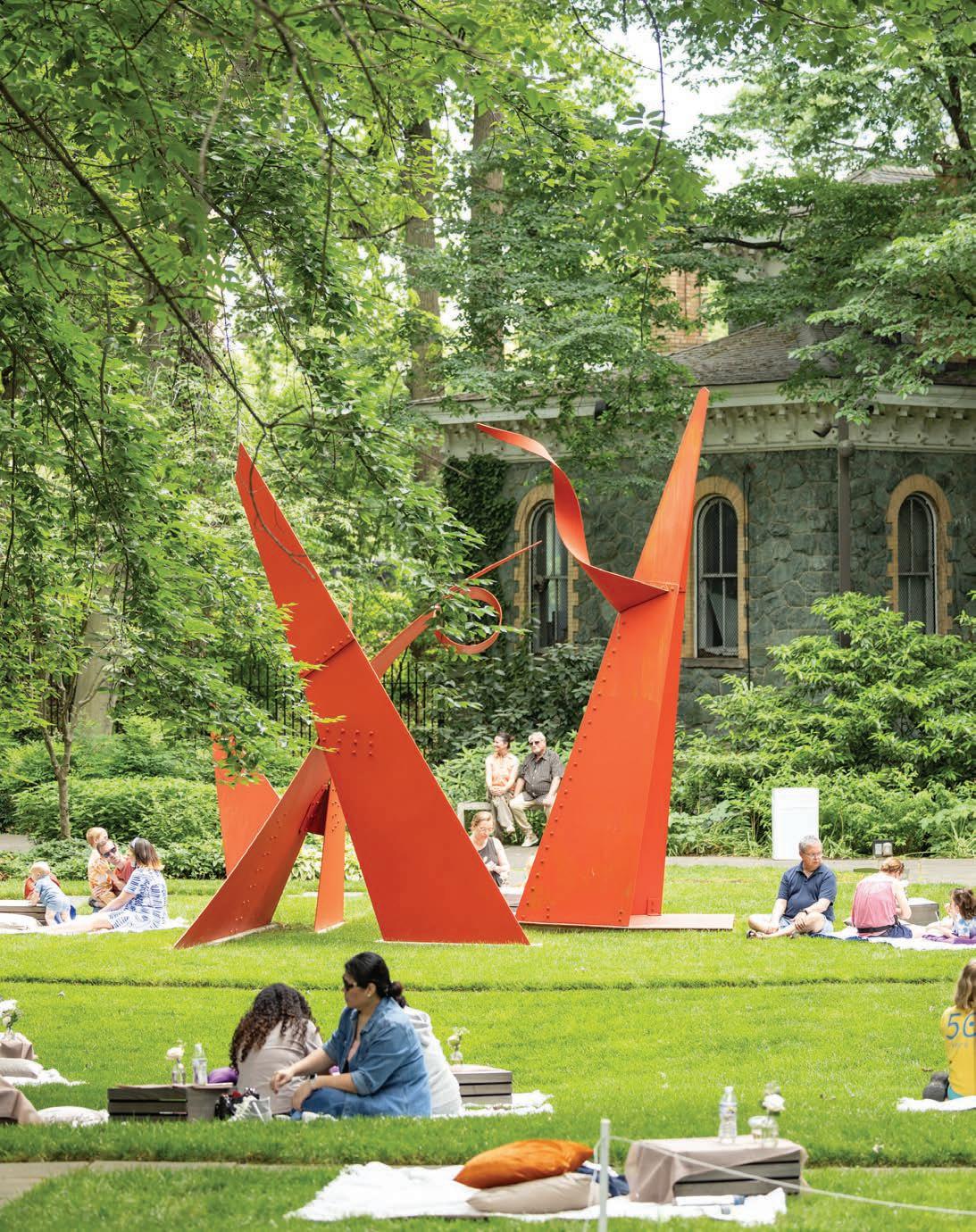
Celebrating its 110th Anniversary this fall, the BMA is home to an internationally renowned collection—a source of inspiration for visitors of all ages and backgrounds. The collection, encompassing many eras and cultures, tells an expansive story of art history from global and local perspectives.



3
centers on the BMA campus—the Patricia and Mark Joseph Education Center; the Ruth R. Marder Center for Matisse Studies; and the Nancy Dorman and Stanley Mazaroff Center for the Study of Prints, Drawings, and Photographs—offer close-up viewing and interactive experiences.

3
floors of contemporary art reflect a history of collecting work that responds to the present moment, including pivotal gifts from Baltimore’s Cone sisters, whose acquisitions from living artists encouraged the Museum’s ongoing commitment to contemporary artists.
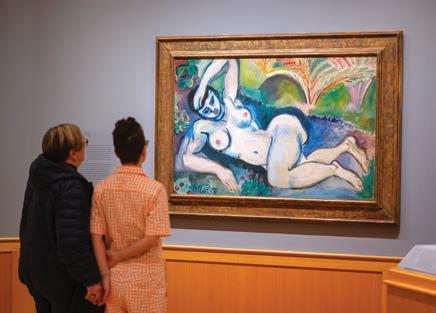
More than 97,000
artworks are in the BMA collection, including the world’s largest public holding of works by Henri Matisse; one of the nation’s finest collections of prints, drawings, and photographs; and a rapidly growing number of works by contemporary artists of diverse backgrounds.

More than 17,000
students and teachers toured the Museum or studied objects from its collection during curatorial seminars, educational programs, and more at the BMA from June 2023 to June 2024.

2/3rds
of the BMA’s collection are works on paper: 57,000 prints, 4,000 drawings, and 4,000 photographs—from Albrecht Dürer and Rembrandt van Rijn to Gordon Parks and Carrie Mae Weems.
6
registrars maintain records for every object in the BMA’s collection, providing details on a work’s display history, condition, acquisition, and more.

“Four Centuries” Vase
The title of Roberto Lugo’s vase, the latest work to enter the BMA’s collection as of August 1, 2024.

Preoccupied: Indigenizing the Museum centers the artworks and perspectives of Native artists, curators, scholars, and community members. The project encompasses community engagement, nine solo and thematic exhibitions, revised labels of works across the BMA’s collections, public programs, and an exhibition catalog that features commissioned creative works, artists’ voices, essays, and 50 full-color images of artworks on view in the Preoccupied exhibitions.
All Preoccupied: Indigenizing the Museum exhibitions are co-curated by Dare Turner (Yurok Tribe), Curator of Indigenous Art at the Brooklyn Museum; Leila Grothe, BMA Associate Curator of Contemporary Art; and Elise Boulanger (Citizen of the Osage Nation), BMA Curatorial Research Assistant, in consultation with a 10-member Community Advisory Panel that includes artists, scholars, and community representatives.
This project is generously supported by the Ford Foundation, the Terra Foundation for American Art, The Andy Warhol Foundation for the Visual Arts, the Eileen Harris Norton Foundation, the Estate of Carolyn Lee Smith, The Dorman/Mazaroff Art Exhibition Fund, the Hardiman Family Endowment Fund, the Sigmund M. and Mary B. Hyman Fund for American Art, The Clair Zamoiski Segal and Thomas H. Segal Contemporary Art Endowment Fund, and the Robert Lehman Foundation.



Closing December 1, 2024
Dyani White Hawk: Bodies of Water
Caroline Monnet: River Flows Through Bent Trees
Don’t wait for me, just tell me where you’re going Curated by Sky Hopinka
Enduring Buffalo
Finding Home
Illustrating Agency
Closing January 5, 2025
Dana Claxton: Spark
Laura Ortman: Wood that Sings
Closing February 16, 2025
Nicholas Galanin: Exist in the Width of a Knife’s Edge

November 2024–January 2026
Throughout its 110th Anniversary, the BMA is presenting a suite of 10 exhibitions and related public programs that explore the relationships between art and the environment across time and geography. Turn Again to the Earth, which takes its title from the writing of environmental activist Rachel Carson, also encompasses a new sustainability plan for the Museum and a citywide eco-challenge led by the BMA that invites other cultural and civic organizations to engage in conversations about the environment and enact their own plans for a more sustainable future.
November 3, 2024–March 23, 2025
LaToya Ruby Frazier’s acclaimed installation More Than Conquerors: A Monument for Community Health Workers of Baltimore, Maryland 2021-2022 is the first of a series of exhibitions and projects presented as part of the BMA’s Turn Again to the Earth environmental initiative. Initially created for the 58th Carnegie International, where it won the Carnegie Prize, the installation features a series of portraits and related testimonies mounted on 18 socially distanced, stainless-steel IV poles that capture and celebrate the essential work of community health workers in Baltimore during the rollout of the COVID-19 vaccine. Powerful and deeply evocative, the large-scale installation monumentalizes the community health workers’ e orts and o ers an alternative approach to monument making that challenges us to consider the nature of how and whom we honor.

Turn Again to the Earth is generously supported by the Eileen Harris Norton Foundation, Johns Hopkins University & Medicine, and CareFirst BlueCross BlueShield.
Above: Jowita Wyszomirska. Nothing Gold Can Stay 2. 2023. Baltimore Museum of Art, Sidney M. Friedberg Acquisitions Endowment for Prints and Drawings, BMA 2024.6. © Jowita Wyszomirska
Curated by Jessica Bell Brown, Executive Director of the Institute of Contemporary Art at Virginia Commonwealth University in Richmond and former BMA Curator of Contemporary
with Antoinette Roberts, BMA Assistant Curator of Contemporary Art.
This exhibition is a part of the Turn Again to the Earth initiative.
This exhibition is sponsored by Johns Hopkins University & Medicine and CareFirst BlueCross BlueShield. Additional support provided by John Meyerho , M.D. and Lenel Srochi Meyerho .

This exhibition is located in the May Gallery.

Renowned author and curator Ekow Eshun reminds us of our profound and joyful connections to nature, how exploring those connections can be a form of resistance against historical oppression, and of ties between early Western colonialism and the current climate crisis.
As part of the Turn Again to the Earth initiative, Black Earth Rising, curated by Ekow Eshun, brings together works by African diasporic, Latinx, and Native artists to change how we think of and discuss environmentalism. Works featured in this exhibiton, opening in spring 2025, center the voices of people of color and conjure the beauty of the natural world as a site of liberation, bringing attention to what the African American scholar bell hooks called “the humanizing connection with nature” as a vital aspect of being Black, Brown, and alive.
“The artists in Black Earth Rising are highlighting the complex histories of global warming through work that is nuanced, lyrical, and deeply poetic, rather than didactic in character,” Eshun said. “By preferencing artists of color and looking to ideas and knowledge systems centered on the Global South, the exhibition seeks to expand the aesthetic discourse around global warming.”
The works in the exhibition connect colonialism’s legacy to the economic, environmental, and social inequalities that undergird the climate crisis.
remain with us today and have shaped a modern world based on the unsustainable extraction of natural resources as well as radical economic inequalities between North and South. Additionally, the idea of the Plantationocene prompts an awareness of climate change as, in the words of scholar Laura Pulido, a “racial process” that invites us to look beyond Western epistemologies and draw insight and inspiration from Indigenous peoples’ cultural practices and knowledge systems.
Black Earth Rising takes its title from terra preta, Portuguese for “black earth,” which refers to a type of fertile soil in the Amazon Basin created by ancient Indigenous civilizations. During the colonial period, European powers exploited terra preta for economic gain, contributing to deforestation, soil degradation, and the suppression and erasure of Indigenous knowledge systems, including those related to the soil management of terra preta.
Instead of looking to 1950, the official start date of the Anthropocene era, as the beginning point of the humanmade climate crisis, the exhibition looks to the concept of the Plantationocene, as proposed by the scholar Donna Haraway and anthropologist Anna Tsin, which suggests we should look as far back as the 1500s.
The early modern age marked the period when plantation agriculture, forced labor migration, and globalized networks of commerce first began to reshape lives and landscapes. These developments
In recent decades, there has been a renewed interest in terra preta soil and Indigenous land management practices as sustainable alternatives to conventional agriculture. This rediscovery has highlighted the resilience and innovation of Indigenous peoples and challenged colonial narratives that dismissed their knowledge and contributions to environmental stewardship.
Black Earth Rising opens mid-May 2025. A companion publication published by Thames & Hudson will be available in the BMA Shop.
Curated by Ekow Eshun, guest curator and author.


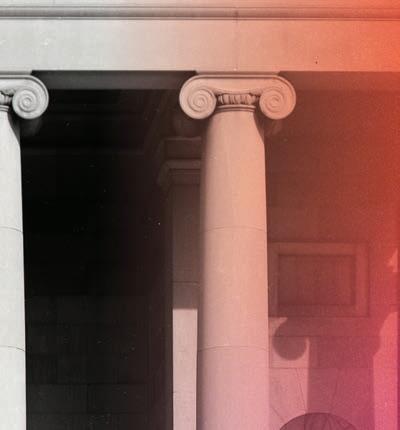

















































































In the wake of the Great Fire that destroyed much of Baltimore in 1904, the city’s civic leaders rallied around the belief that a great city needed to have a great museum. From this beginning, the Museum has grown into a major cultural destination that cares for an internationally celebrated collection of more than 97,000 artworks and embodies a commitment to artistic excellence and social equity for the benefit of all communities throughout Baltimore and beyond. A selection of milestones on the following pages offers a look at the celebrated history of the BMA and its continued work to connect art to Baltimore and Baltimore to the world.







Eight Baltimoreans become incorporators of the Baltimore Museum of Art.
From the beginning, the proposed Museum’s educational function was essential. The BMA was to bring the fine arts into the lives of the citizens and their children.
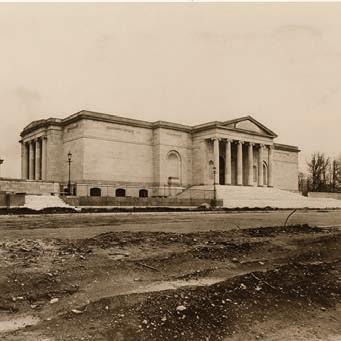
The BMA opens its neoclassical building.
Visitors were greeted by a monumental cast of Rodin’s Thinker, given to the BMA by Founding Trustee Jacob Epstein, a successful Baltimore merchant and philanthropist whose collection of Old Master paintings was presented as one of the opening exhibitions. The centerpiece was Sir Anthony van Dyck’s monumental Rinaldo and Armida (1629), commissioned for England’s King Charles I.

The BMA’s education department—one of the earliest for a U.S. museum—expands with story hours and art classes.
Attendance for educational programs grew to 15,000 children in 1930–31.
Founding Trustee Mary Frick Jacobs promises her collection to the Museum.
A new wing, designed by John Russell Pope, was completed in 1937 to feature the Jacobs collection of European masterworks by Sandro Botticelli, Jean-Baptiste-Siméon Chardin, Rembrandt van Rijn, and Elisabeth Louise Vigée Le Brun.
The BMA presents one of the nation’s earliest exhibitions of African art.
The Museum’s African art collection began with a dozen works from Egypt and now holds more than 2,000 objects from nearly every African country.
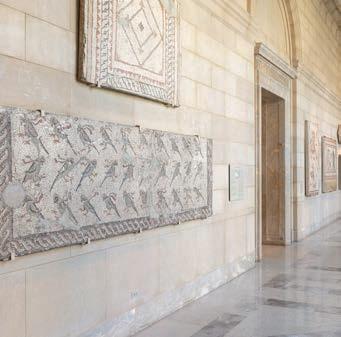
Ancient Antioch mosaics are installed.
Founding Trustee Robert Garrett led the BMA’s participation in archaeological excavations in partnership with the Musées Nationaux de France (Louvre), Worcester Art Museum, Princeton University, Harvard University’s Fogg Art Museum, and Dumbarton Oaks, in agreement with the Syrian Department of Antiquities, and subsequently with the Hatay government of Turkey.


The BMA presents the Harmon Foundation’s exhibition of works by contemporary Black artists.
Seen by approximately 12,000 people during its two-week run, it is considered one of the most successful shows that season.
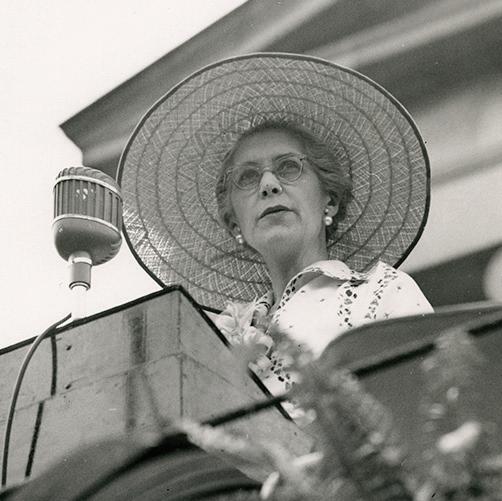
Adelyn D. Breeskin is appointed Acting Director from 1942 to 1947, then Director from 1947 to 1962. Breeskin played a major role in expanding the breadth of the BMA’s collection and the building to house it. She also secured the museum’s international reputation by ensuring Claribel and Etta Cone’s collection would stay in Baltimore.
The BMA receives the vast collection of Baltimore industrialist and banker T. Harrison Garrett.
Works by Albrecht Dürer, Francisco Goya, and Rembrandt van Rijn are among the more than 20,000 engravings, etchings, and woodcuts. These works range from the late 15th century through the late 19th century.
His sons, John W. Garrett and Robert Garrett, likewise become exceptionally generous donors to the Museum.
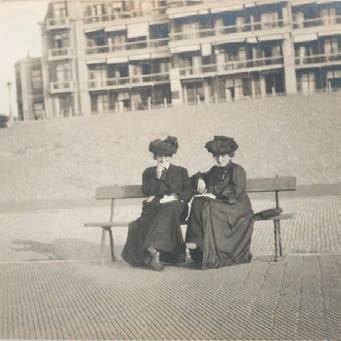
Dr. Claribel and Miss Etta Cone’s extraordinary bequest of 3,000 objects is formally accessioned by the Museum.
When Claribel died in 1929, she bequeathed her collection to her younger sister Etta, suggesting that it be given to the BMA “if the spirit of appreciation for modern art in Baltimore should improve.”
In addition to more than 600 works by Henri Matisse and masterpieces by Paul Cézanne, Pablo Picasso, and Vincent van Gogh, The Cone Collection includes paintings; sculptures; more than 1,000 prints and drawings and illustrated books; a large group of textiles; jewelry, furniture, and other decorative arts; African art; Japanese prints; antique ivories and bronzes; and the sisters’ personal library and archives. Etta also gave funds to build a new wing to house the collection.

The Saidie A. May Young People’s Art Center opens.
The center made the BMA one of the first museums in the country to have a large space—with galleries, classrooms, art studios, and an auditorium—dedicated to children’s education. May’s 1951 bequest would include nearly 400 paintings, sculptures, ceramics, textiles, furniture, and decorative art objects from many periods and many lands, but her focus on 20th-century European masters remained.

The collection of Trustee Jacob Epstein is formally added to the Museum as part of his bequest.
In addition to the Van Dyck masterpiece, the Epstein collection contains outstanding paintings by Frans Hals, Thomas Gainsborough, Raphael, Sir Joshua Reynolds, and Titian, as well as sculpture by Auguste Rodin.

1958
Alan and Janet Wurtzburger’s collection of African sculpture, Oceanic art, and Pre-Columbian and Native American art goes on display.
The Baltimore philanthropists began collecting works from African and Oceanic countries and giving them to the BMA in order to acquaint the people of Baltimore with artistic expressions of some of the world’s most creative Indigenous cultures. The couple ultimately acquired more than 400 outstanding examples and also served as Trustees for many years.

1960
BMA Director Adelyn Breeskin commissions the 1960 U.S. Pavilion for the Venice Biennale.
Breeskin selects Abstract Expressionist artists Hans Hofmann, Franz Kline, Philip Guston, and Theodore Roszak for the world’s most prestigious international exhibition of contemporary art.
1972
The Downtown Gallery opens. Roughly 36,000 people visited the Downtown Gallery in its first year, many of them office workers stopping in during their lunch breaks.
The Traveling Exhibition Services program begins.
The BMA presented per year approximately 61 four-week exhibitions of about 30 objects at Maryland community cultural centers, college and university art galleries, libraries, banks, schools, and shopping malls.
1980
The Alan and Janet Wurtzburger Sculpture Garden opens.
Its 19 major works of early modern sculpture range from August Rodin’s Balzac, which dates from the late 19th century, to works created by Isamu Noguchi and Alexander Calder in the 1950s and 1960s.

1982
The East Wing opens.
The new wing has expansive new galleries and a 363-seat auditorium to accommodate larger exhibitions, films, and performances. The new wing also encompasses the Murray J. Rymland Terrace, an expanded Museum Shop, and a full-service restaurant overlooking the Wurtzburger Sculpture Garden.
Concurrently, the museum expands galleries for the arts of Africa, the Americas, and Oceania.
The Museum begins charging admission for the first time in its history.
1982
The BMA begins Close Encounters, a free program for fourth graders in Baltimore City Public Schools.
The program enhances visual literacy and critical thinking skills using works of art in the BMA’s collection. More than 30,000 students have participated in these museum tours and classroom experiences, which continue today.

The Ryda and Robert H. Levi Sculpture Garden opens.
The collection boasts 14 artworks from the latter half of the 20th century and features major examples by Alexander Calder, Anthony Caro, Ellsworth Kelly, Joan Miró, Louise Nevelson, Isamu Noguchi, and Tony Smith.
The BMA acquires the George H. Dalsheimer Collection.
The collection includes more than 600 vintage prints by most of the major photographers of the 20th century, including Ansel Adams, Harry Callahan, Robert Frank, Aaron Siskind, and Edward Weston. These works arrive as a partial gift and purchase with exchange funds from the Edward Joseph Gallagher III Memorial Collection; a decade later, Dalsheimer will give the BMA an additional 300 photographs from his collection.


The West Wing for Modern Art opens.
The wing features 16 galleries for the display of a diverse and growing collection of post-1945 art, featuring major works by Dan Flavin, Donald Judd, Barbara Kruger, Susan Rothenberg, Mark Rothko, and Andy Warhol.
The BMA and the Walters Art Museum purchase the acclaimed George A. Lucas Collection of 19th-century French art.
George A. Lucas was an art dealer whose holdings encompassed 20,000 objects, including the finest representation in the U.S. of the graphic work of Honoré Daumier, Eugène Delacroix, Édouard Manet, and James McNeil Whistler.
The State of Maryland and the generosity of numerous individuals in the community also help make possible the purchase of this collection, which had been on extended loan for more than 60 years.
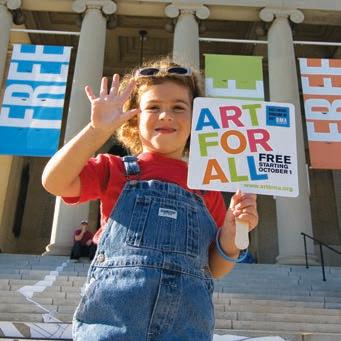
The BMA begins offering year-round free general admission for the first time in nearly two decades, thanks to initial government support and endowment gifts.
Ongoing support is provided from the Cohen Family Fund for Free Admission, Lord Baltimore Capital Corporation, Mary J. and James D. Miller, James S. Riepe Family Foundation, and the DLA Piper Fund.
A $10 million promised gift from Miss Dorothy McIlvain Scott endows operations and programs for the newly designated Dorothy McIlvain Scott American Wing.
This transformational gift is the largest individual gift in the Museum’s history. Later that year, a $5 million gift from the Dorothy Wagner Wallis Trust will create an endowment for the BMA’s Director.
“It is the duty of our museum to show the art of the present together with the art of the past ... art is, as ever, alive.”
—Adelyn Breeskin

In a New Light: The Campaign for The Baltimore Museum of Art begins.
The most ambitious philanthropic campaign in the Museum’s history raised more than $81 million and expanded the collection by 4,000 gifts of art.

The newly renovated Contemporary Wing reopens.
The reimagined wing offers state-of-the-art lighting, two new interactive galleries, a new black box gallery, and the Museum’s first mobile art guide for smartphones.

The BMA celebrates its 100th Anniversary.
The BMA celebrates its 100th Anniversary by reopening the Merrick Historic Entrance, which had been closed since 1982, and unveiling dramatic renovations to the Dorothy McIlvain Scott American Wing, Zamoiski East Entrance, East Lobby, and BMA Shop.

Renovated African and Asian art galleries reopen.
These new presentations represent expansions from previous installations, more than tripling the gallery space for African art and doubling the galleries for Asian art.
The Patricia and Mark Joseph Education Center opens.
Areas include a new exhibition space, commons area, art-making studio, docent room, and school group entrance and orientation foyer.
The BMA receives a gift of 85 prints from the Pierre and Tana Matisse Foundation.
The addition of these works from the foundation of the artist’s son gives the Museum nearly 1,200 works by Henri Matisse, making it the largest public collection of the French master.

The BMA co-commissions the U.S. Pavilion for the 57th Venice Biennale with the Rose Art Museum.
The presentation of Mark Bradford: Tomorrow Is Another Day is seen by more than 370,000 visitors from May through November.
The BMA redefines its mission to make artistic excellence and social equity the basis for all programmatic and administrative activities.
The same year, the Museum deaccessions paintings by Franz Kline, Robert Rauschenberg, and Andy Warhol, among others, raising $16.2 million through public and private auctions to acquire more works by women and artists of color. Among the acquisitions made with those funds are works by Isaac Julien, Wangechi Mutu, Amy Sherald, Carrie Mae Weems, Jack Whitten, and Lynette Yiadom-Boakye.

BMA Lexington Market opens in the world’s oldest continually operating public market.
The space hosts a variety of art programs and collaborative activities presented in partnership with other organizations and individuals.

The inaugural Robert E. Meyerhoff and Rheda Becker Biennial Commission debuts with a major installation by internationally renowned artist Mickalene Thomas.
This is the first named public art commission for a U.S. museum and includes a curatorial fellowship to strengthen diversity in the museum field.

The Nancy Dorman and Stanley Mazaroff Center for the Study of Prints, Drawings, and Photographs opens.
The new center is dedicated to the presentation, study, and preservation of the BMA’s 68,000-object collection of graphic art.
The Ruth R. Marder Center for Matisse Studies opens.
The new center serves as a major resource for scholars and visitors interested in learning more about the French master’s practice.

The BMA opens Guarding the Art, an exhibition curated by 17 BMA security officers, who were mentored by Dr. Lowery Stokes Sims and received guidance from Museum staff for a year.
This groundbreaking exhibition receives considerable media attention. The initiative, the first of its kind, was conceived by BMA Trustee Amy Elias in conversation with Asma Naeem, then Eddie C. and C. Sylvia Brown Chief Curator.

James D. Thornton is elected Board Chair.
He is the first person of color to lead the BMA’s Board of Trustees. Since joining the BMA’s Board in 2004, he has led or played a pivotal role in numerous Board committees.

Asma Naeem is appointed Dorothy Wagner Wallis Director.
She is the first person of color and the first person raised in Baltimore to lead the Museum. She was previously the BMA’s Eddie C. and C. Sylvia Brown Chief Curator and held the Interim Co-Director position with Christine Dietze before her appointment.
The newly renovated Patricia and Mark Joseph Education Center reopens.
The center features three interactive installations commissioned by artist/ educators Derrick Adams, Mary Flanagan, and Pablo Helguera, as well as updated art-making spaces and amenities to better serve students.

The BMA formalizes its commitment to a sustainable future with Turn Again to the Earth. The momentous initiative includes an evaluation of internal BMA practices to support the creation of a sustainability plan for the Museum; a series of exhibitions and public programs that capture the relationships between art and the environment across time and geography; and a citywide eco-challenge led by the BMA that invites Baltimore and regional partners to engage in environment-related conversations and enact their own plans for a more sustainable future. By engaging artists and city leaders, the Museum is a locus of creativity and conversation, enacting positive change. Show your support at artbma.org/turnagain.


BMA BALL HONORARY CO-CHAIRS
GOVERNOR WES
MOORE AND FIRST LADY DAWN MOORE
MAYOR KURT
SCHMOKE AND PATRICIA SCHMOKE
R&B GRAMMY®
WINNER JOHN LEGEND
BMA BALL COMMITTEE
AMY ELIAS, CO-CHAIR
GEORGE
PETROCHEILOS, CO-CHAIR
DIAMANTIS XYLAS, CO-CHAIR

MICHAEL SHERMAN, CO-CHAIR
ALEXANDER BAER
PATRICIA LASHER
SATURDAY, NOVEMBER 23, 2024
The inaugural BMA Ball sold out in record time, thanks to enthusiastic and generous sponsors who believe in the Museum’s mission to welcome all, provide innovative and educational experiences, and uplift the work of artists in Baltimore and beyond.
The BMA Ball establishes the Artists Who Inspire and Changemaker Who Inspires awards. These honors are given to individuals who advance social justice and equity through their work. The inaugural Artists Who Inspire recipients are John Akomfrah and LaToya Ruby Frazier, and the first Changemaker Who Inspires award will be presented to BMA Trustee Sherrilyn Ifill (see opposite page).
Following the BMA Ball is an After Party from 9 p.m. to midnight. Visit artbma.org/afterparty for details.

JAMES D. THORNTON
KWAME WEBB
AFTER PARTY CO-CHAIRS
DARIUS GRAHAM
TONYA MILLER HALL
AFTER PARTY COMMITTEE
MARIO ARMSTRONG
STACY HANDLER
JULIE HOPKINS
AMANDA KIMBERS
CARA OBER
KENDRA PARLOCK
JEREMY ROSENDALE
ASHLEY SMITH



Artist and filmmaker John Akomfrah investigates memory, postcolonialism, temporality, and aesthetics; his works often explore the experiences of migrant diasporas globally. He was a founding member of the Black Audio Film Collective and currently collaborates with Smoking Dogs Films. His works have been presented in several solo exhibitions. He was awarded the Artes Mundi Prize in 2017. Akomfrah represented Great Britain in the 60th Venice Biennale this year and took part in the 2023 Sharjah Biennale. He received a knighthood for services to the arts in the 2023 New Year Honours, the first honours list issued by King Charles III.
LaToya Ruby Frazier engages with social justice, cultural change, and the American experience through a range of media: photography, video, performance, installation, and books. Her projects have addressed industrialism, Rust Belt revitalization, environmental justice, access to healthcare and clean water, workers’ rights, the nature of family, and communal history. Her work has been the subject of numerous solo exhibitions across the U.S. and Europe—including a major retrospective at the Museum of Modern Art—and her work is held in many public art collections. She received a 2020–21 National Geographic Storytelling Fellowship and a commission for the 58th Carnegie International.

BMA BALL SPONSORS
GEORGE PETROCHEILOS AND DIAMANTIS XYLAS
PATRICIA AND MARK JOSEPH, THE SHELTER FOUNDATION
SHERMAN FAMILY FOUNDATION
TONI AND DWIGHT BUSH, JANICE AND RICHARD ROBERTS AND ANN DIBBLE JORDAN
ANGELOS FAMILY
LOUISE AND NICK CORTEZI
HENRY AND MARIE-JOSEE KRAVIS
TRACI AND MARK LERNER
ROBERT E. MEYERHOFF AND RHEDA BECKER
AMY ELIAS AND RICHIE PEARLSTONE THE BALTIMORE SUN
WHITING-TURNER
THE ALICIA AND YAYA FOUNDATION
VIRGINIA ADAMS AND NEAL FRIEDLANDER

AMERICAN TRADING AND PRODUCTION CORPORATION
ALEXANDER BAER BGE
TOM AND JEAN BROOKS
BROWN CAPITAL MANAGEMENT
CAREFIRST BLUECROSS BLUESHIELD
CONTINENTAL REALTY

Sherrilyn Ifill, a leading voice in civil rights, is the inaugural Vernon E. Jordan, Jr., Esq. Endowed Chair in Civil Rights at Howard University School of Law. Before this role, she was the seventh president and director-counsel of the NAACP Legal Defense & Educational Fund, Inc. Ifill has received the Radcliff e Medal, the Brandeis Medal, the Thurgood Marshall Award, and the New York State Bar Association’s Gold Medal. She is also the recipient of many honorary doctorates. Ifill is a scholar in residence at the Museum of Modern Art. Her forthcoming book addresses race and the current democratic crisis in the U.S.
ELLEN AND LINWOOD DAME AND THE ROTHSCHILD FOUNDATION
JUDI AND STEVEN B. FADER FAMILY FOUNDATION
GENINE MACKS FIDLER AND JOSH FIDLER
NUPUR PAREKH FLYNN AND GUY E. FLYNN
SANDRA LEVI
GERSTUNG
LORIN GU
AGNES GUND
NANCY HACKERMAN
HULL STREET ENERGY
MARY HYMAN

SPECIAL THANKS TO THE FRENCH PARADOX WINES
LINWOODS
PAT LASHER AND RICHARD JACOBS
J.P. MORGAN CHASE & CO.
EDWARD J. AND DALE P. MATHIAS
JOHN MEYERHOFF, M.D. AND LENEL
SROCHI MEYERHOFF
HEATHER AND BILL MILLER
PAUL OOSTBURG
SANZ AND TONYA ROBINSON
ANNE STONE
LORAYNE AND JIM THORNTON
MICHELE SPEAKS AND DAVID WARNOCK
KWAME AND KATHRYN WEBB
THE WEGLICKI FOUNDATION
TED AND MARY JO WIESE
SIMPLY BEAUTIFUL FLOWERS
TABLE TOPPERS

Saturday, October 26, 9 a.m.–1 p.m.
Join educators from across the state for a hands-on workshop exploring Preoccupied: Indigenizing the Museum. Designed exclusively for teachers, this workshop begins with a light breakfast and includes a private curatorial tour of Preoccupied, art making led by a teaching artist, and a discussion connecting art to the classroom curriculum. Participants will also receive a 10% discount at the BMA Shop. Visit artbma.org/events to register.
Every Sunday, 2–5 p.m.
Embrace your inner artist while exploring exhibitions and works from the collection through hands-on art-making workshops each Sunday in the Ellis A. Gimbel Children’s Studio in the Patricia and Mark Joseph Education Center. Free Family Sundays are designed for children and families and feature artist-led making sessions focused on different themes and presented in various formats.
Visit artbma.org to sign up to receive announcements and reminders about BMA family programs.

Friday, November 1, 8–11 p.m.
Members: $25
Non-Members: $35
Always popular, Art After Hours returns this fall with an evening inspired by Preoccupied: Indigenizing the Museum, featuring an amplified violin performance by exhibiting artist, composer, and musician Laura Ortman (White Mountain Apache). Plus enjoy evening access to galleries with specialty cocktails, delicious appetizers, a DJ, art making, and dancing. Visit artbma.org for details.
Thursday, November 21, 6–9 p.m.
Join us for a panel discussion and a reception in connection with the LaToya Ruby Frazier: More Than Conquerors: A Monument for Community Health Workers of Baltimore, Maryland 2021-2022 exhibition. Learn about the experiences and essential contributions of community health care workers through the lens of scientific research spearheaded by leaders of the Johns Hopkins Center for Health Equity.
Sunday, November 17, and Sunday, November 24, 10 a.m.–5 p.m.
Celebrate the release of Sankofa Dance Theater: 30 Years of Music Movement and Folkways, a limited-edition hardcover book chronicling the troupe’s powerful history as a cultural ambassador in Baltimore and West Africa. Both days feature rare dance and free drum and movement workshops with members of Sankofa Dance Theater.
Visit kibibiajanku.com/sankofa for details.
Thursday, January 16, 6–9 p.m.
Members of Remains // An Archive discuss the inspiration for the exhibition Slavery in Motion with the exhibition artists: Romaine McNeil (Westmoreland, Jamaica), Tatiana Esh (New York, NY), Sha-Shonna Rogers (Baltimore, MD), and Julia Mallory (Philadelphia, PA). The exhibition, on view this fall at the Avery Research Center for African American History and Culture in Charleston, SC, was inspired by the life of Molia, a young African woman from the mid-eighteenth century who was enslaved in Jamaica. Remains, an archive of the Mellon-funded Diaspora Solidarities Lab, explores grief through various media in the arts, digital storytelling/mapping, and curation.
Led by Gallery Guides, interactive tours highlight works across the Museum. Choose from topics including the renowned Cone Collection, Contemporary Artists, BMA Collection Highlights, and Black Artists. All tours include art from around the world made by historically underrepresented groups. To provide the best experience, we limit tour size to no more than 60 participants. For information on pricing and how to register, please visit artbma.org/learn/adult-tours/.
All programs and events are free and open to the public unless otherwise noted.

Join us at the BMA’s branch location inside America’s oldest market and enjoy free art experiences Thursday, Friday, and Saturday from 10 a.m. to 5 p.m.
Connecting Baltimore’s creative community with Lexington Market’s patrons, this space invites visitors to make art, participate in public programming, read from our noncirculating library, or simply just be.
Twice monthly, every second and fourth Saturday, we offer workshops, artist talks, screenings, and performances with Baltimore-based creatives. Stay updated on upcoming programming by visiting artbma.org/bmalexingtonmarket.
Saturday, November 9, 8:30–10:30 a.m.
Jessica Bell Brown, Executive Director of the Institute of Contemporary Art at Virginia Commonwealth University in Richmond and former Curator of Contemporary Art at the BMA, discusses with the artist the extraordinary exhibition, LaToya Ruby Frazier: More Than Conquerors: A Monument for Community Health Workers of Baltimore, Maryland 2021-2022. Guests will enjoy a buffet brunch before or after the talk. This event is open to Contributor Members and above. To upgrade to the Contributor level, call 443-573-1800.
Registration required. Invitations will be emailed.
Thursday, November 14, 6–8 p.m.
BMA Council Members are invited to a panel discussion between LaToya M. Hobbs, painter and printmaker; Tracey Beale, jewelry artist and Director of Public Programs; Brittany Luberda, Anne Stone Associate Curator of Decorative Arts; and Karen Olson, Director of Editorial Content/Editor in Chief of American Craft. The panel discussion will be held in the Joseph and Rebecca Meyerhoff Auditorium. After the panel, guests will enjoy a reception in Fox Court.
Reservations required. Invitations will be mailed.
Sponsored by PNC Bank
Thursday, December 5, 6–8 p.m.
All employees of Corporate Council Members are invited to bring a guest to spend the evening in the Museum. Attendees will enjoy late-night access to LaToya Ruby Frazier: More Than Conquerors: A Monument for Community Health Workers of Baltimore, Maryland 2021-2022, music, and a happy hour with beer, wine, and light bites.
Reservations required.
Invitations will be emailed.
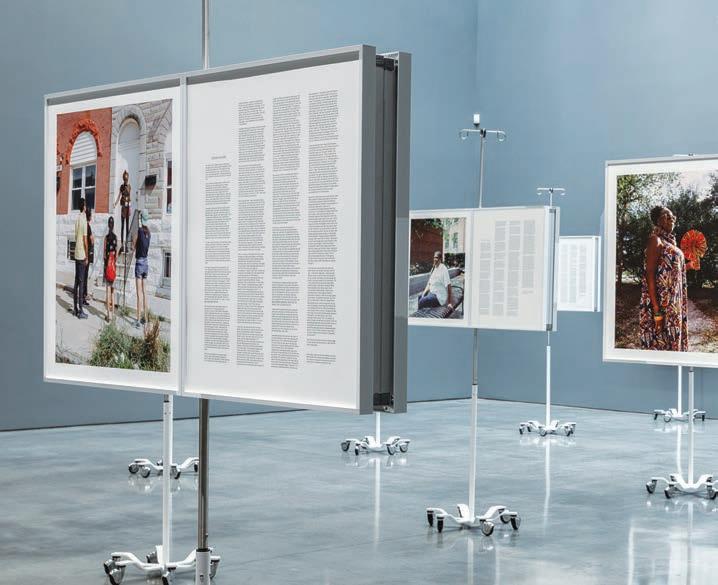

Friday, December 6–Sunday, December 8
Double your member’s discount at the BMA Shop to save up to 20%!
No RSVP required.

Mark Saudek
Mark Saudek grew up in New York and currently lives in Baltimore, where he and his wife Christine, an English teacher at Friends School of Baltimore, are fortunate to have raised their family. After attending Wesleyan University, the University of Edinburgh in Scotland, and the University of Maryland Frances King Carey School of Law, Mark served as a law clerk to the Hon. Catherine C. Blake of the United States District Court for the District of Maryland. For the past 16 years, Mark has been a partner with the Baltimore law firm of Gallagher Evelius & Jones LLP, where he practices commercial litigation and co-chairs the firm’s investigations practice. Mark has served a variety of nonprofit entities, including Teach for America—Baltimore, the Federal Bar Association, and The Loading Dock, a building materials reuse facility that provides low-cost building supplies to Baltimoreans. During Mark’s tenure as Chair of The Loading Dock’s Board of Trustees, the organization partnered with Baltimore-based artist Marian Glebes in the BMA’s 2016 Commons Collaboration, exploring the meaning of home.

Derrick Adams
Derrick Adams is a multidisciplinary artist living and working in Brooklyn, New York. Adams’ work celebrates and expands the dialogue around contemporary Black life and culture through scenes of normalcy and perseverance. He has been the subject of solo exhibitions at prestigious institutions and mounted numerous commissioned public installations. His work has been featured in notable group exhibitions. He received his BFA from Pratt Institute, New York, and graduated with an MFA from Columbia University, New York. In addition to his critically acclaimed art practice, Adams has held numerous teaching positions and is currently a tenured assistant professor in the School of Visual, Media and Performing Arts at CUNY Brooklyn College. He also holds an honorary doctorate from Maryland Institute College of Art. In 2022, Adams established Charm City Cultural Cultivation, a nonprofit organization to support and encourage underserved communities in the city of Baltimore through events conducted by three entities: The Last Resort Artist Retreat, The Black Baltimore Digital Database, and Zora’s Den.

Are you taking advantage of all your BMA Member benefits?
All Members Receive
Invitations to exclusive Member events
10% discount at the BMA Shop
Twice-yearly shopping days with 20% discount!
10% discount at Gertrude’s Chesapeake Kitchen
Special offers at area restaurants and cafes
Discounted parking during Museum hours at the BMA East and West lots

Opportunity to travel with the BMA on Travel Program day trips
Members pricing for innovative BMA programs and performances
Access to digital programming
Subscription to the Members’ magazine, BMA Today, and a monthly newsletter delivered to your inbox
For more information about the benefits offered at higher levels of Membership, visit artbma.org/join, call 443–573–1800, or email membership@artbma.org.
June 2, 2024
Over 200 Members enjoyed a sun-soaked celebration in the Sculpture Gardens with beautifully curated picnic crates, live music, artmaking, and ice cream from Baltimore favorite Taharka Brothers.

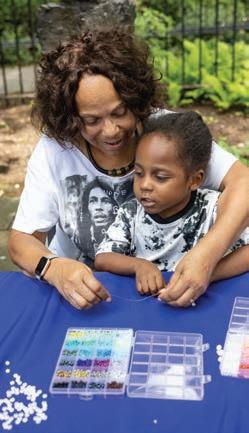


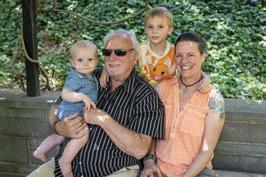








November 15, 2023
When they weren’t taking in after-hours access to Joyce J. Scott: Walk a Mile in My Dreams, visitors danced the night away to music by DJ Ty Alexander. Other highlights included a pop-up performance by Joyce J. Scott featuring Kay Lawal-Muhammad and a weaving tutorial with the Weavers Guild of Greater Baltimore. Necessary Tomorrows founder Sharayna Christmas led an interactive writing experience, and multidisciplinary artist Michele Blu brought out participants’ “inner artists” during a wearable crochet workshop.
Performance by Joyce J. Scott
December 3, 2023
For the closing of her 50-year retrospective, Joyce J. Scott: Walk a Mile in My Dreams, Scott joined her longtime collaborators—composer Lorraine Whittlesey, jazz pianist Derrick Thompson, and bassist Mitchell Coates— in a momentous musical concert performed for a sold-out crowd. Womanist, abolitionist, and cultural worker Sharayna Christmas gave the opening remarks, and the event was sponsored in part by the Joshua Johnson Council (JJC), one of the nation’s oldest museum support groups devoted to African American and Black Diaspora art. JJC is an affiliate organization of the Baltimore Museum of Art.
Photos by Christina Randolph
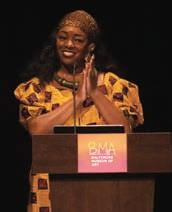




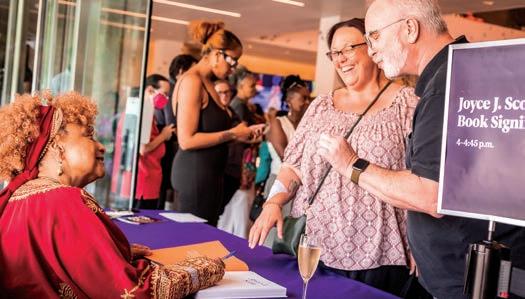
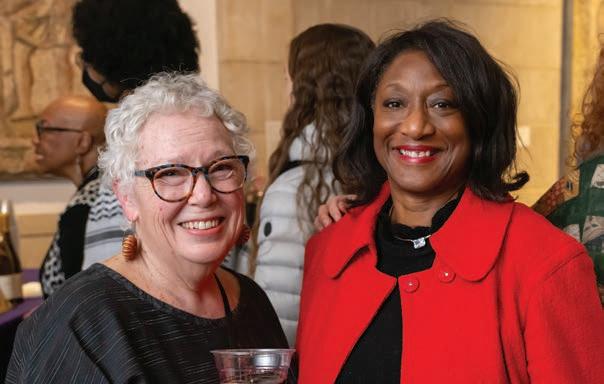
The BMA Council provides opportunities for the Museum’s most generous donors to enjoy a deeper exploration of the BMA’s collection and exhibitions through a carefully curated series of events offered throughout the year.
BMA Council Benefits Include
Invitations to exclusive Council events, including opening receptions for major exhibitions
Curator-led tours followed by a prix-fixe group lunch
Exclusive cocktail receptions and curator presentations
10% discount at Gertrude’s Chesapeake Kitchen
15% discount at the BMA Shop
Free parking at the BMA East and West lots
Special recognition at the Museum’s entrance and in the online Annual Report
Subscription to the Members magazine, BMA Today

Reciprocal Members privileges at hundreds of North American museums with the Museum Alliance
Reciprocal Program (MARP), North American Reciprocal Museum (NARM), and Reciprocal Organization of Associated Museums (ROAM)
Opportunity to travel with the Museum Travel Alliance
BMA Council enrollment begins at the $1,650 Patron’s Council level. To join or learn more, call 443–573–1800 or email council@artbma.org.





Proceeds from the BMA Shop benefit the Museum’s educational programs.
1. Native Northwest Sasquatch Puppet,
2. Animambo Rain Stick,
3. Makeda Beaded Collar Necklace, $115
4. Zelda Beaded Snake Earrings, $115
5. James Baldwin and the Voices of Queer Resistance, $39.95
6. Marcellina Oseghale Akpojotor, $35
7.


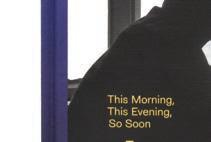

















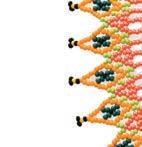






















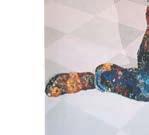




















































Dyani White Hawk: Bodies of Water Through December 1, 2024
Caroline Monnet: River Flows Through Bent Trees Through December 1, 2024
Don’t wait for me, just tell me where you’re going Curated by Sky Hopinka (Ho-Chunk Nation and a descendant of the Pechanga Band of Luiseño people) Through December 1, 2024
Enduring Buffalo Through December 1, 2024
Illustrating Agency Through December 1, 2024
Finding Home Through December 1, 2024
How Do We Know the World? Through January 5, 2025
Laura Ortman: Wood that Sings Through January 5, 2025
The Art of Pattern: Henri Matisse and Japanese Woodcut Artists Through January 5, 2025
Dana Claxton: Spark Through January 5, 2025
Nicholas Galanin: Exist in the Width of a Knife’s Edge Through February 16, 2025
Raúl de Nieves: and imagine you are here Through May 4, 2025

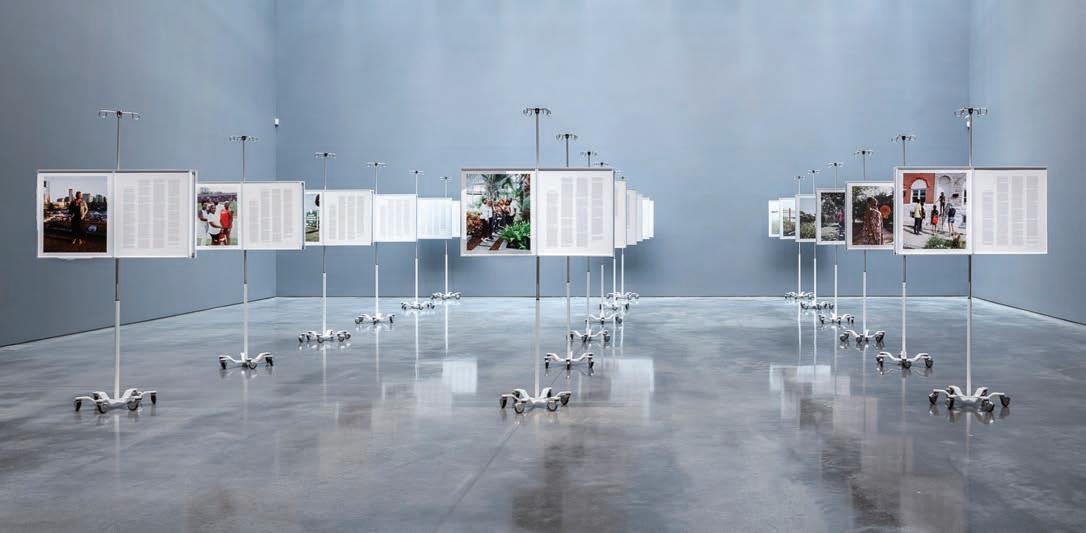
LaToya Ruby Frazier: More Than Conquerors: A Monument for Community Health Workers of Baltimore, Maryland 2021-2022 November 3, 2024–March 23, 2025

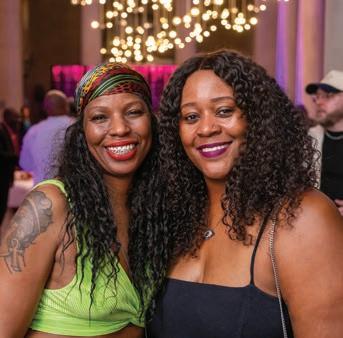
1 FRIDAY
Art After Hours, 8–11 p.m.
Members: $25; Non-Members: $35
Free Family Sunday, 2–5 p.m.
6 WEDNESDAY
Creative Connections at the BMA 10:30 a.m.–12 p.m.
9 SATURDAY
Contributors Brunch: LaToya Ruby Frazier, 8:30–10:30 a.m.
Baby Art Date: Animals 10:30–11:30 a.m.
10
Free Family Sunday, 2–5 p.m.
20 SUNDAY
Free Family Sunday, 2–5 p.m.
25 FRIDAY
Baby Art Date: Nature, 10:30–11:30 a.m.
26 SATURDAY
Teacher Workshop: Preoccupied: Indigenizing the Museum, 9 a.m.–1 p.m.
27 SUNDAY
Free Family Sunday, 2–5 p.m.
1 SUNDAY
Free Family Sunday, 2–5 p.m.
5 THURSDAY
Corporate Council Night, 6–8 p.m.
6 FRIDAY
Members Holiday Shopping Days
14 THURSDAY
American Craft Council Panel Talk & Reception, 6–8 p.m.
17 SUNDAY
Free Family Sunday, 2–5 p.m.
Sankofa Dance Theater 10 a.m.–5 p.m.
21 THURSDAY
Centering the Margins Panel Discussion and Reception, 6–9 p.m.
22 FRIDAY
Baby Art Date: Animals 10:30–11:30 a.m.
23 SATURDAY
Museum closed.
BMA Ball & After Party; visit artbma.org/ball for details
24 SUNDAY
Limited galleries open; visit artbma.org/visit for details
Sankofa Dance Theater 10 a.m.–5 p.m.
Free Family Sunday, 2–5 p.m.
28 THURSDAY Museum closed

7 SATURDAY
Members Holiday Shopping Days
8 SUNDAY
Members Holiday Shopping Days Free Family Sunday, 2–5 p.m.
14 SATURDAY
Baby Art Date: Seasons 10:30–11:30 a.m.
15 SUNDAY Free Family Sunday, 2–5 p.m.
22 SUNDAY Free Family Sunday, 2–5 p.m.
25 WEDNESDAY Museum closed
29 SUNDAY
Free Family Sunday, 2–5 p.m.

How long have you lived in Baltimore?
I have lived in Baltimore on and off for two decades. I moved to the city from Delaware to begin a career in advertising sales for print magazines. Years later, I relocated to Washington, DC, to launch and redesign several magazines. The world of art and culture lured me from publishing. I left DC to begin my nonprofit fundraising career at the Baltimore Symphony Orchestra. There, I led a special project presenting Soulful Symphony, an all–African American orchestra,
roasting marshmallows and sipping champagne as she sings “You’re So Vain”!
In 2011, I made Baltimore my permanent home. I now happily live in Ednor Gardens. I’m here to stay!
What is your most memorable experience with art?
Growing up, I was surrounded by art created by my great-aunt, Laura Wheeler Waring. She was a Harlem Renaissance painter; her work was recently featured in the Metropolitan Museum of Art’s groundbreaking exhibition The Harlem Renaissance and Transatlantic Modernism
A portraitist, Laura painted her friends and colleagues of the Black middle class—W.E.B. Du Bois, Marian Anderson, James Weldon Johnson, and others. She sought to show on canvas the brilliance of Black Americans—to share it with the world and debunk anti-Black racism and discrimination after Reconstruction and during the Jim Crow era.
not only to connect to each other but also to see and think differently about the world—for the better.
As the largest art museum in Maryland, the BMA is answering the call as a leader in centering Baltimore-area artists and educating the public. Conceptual artist Luis Camnitzer says it best: “The museum is a school. The artist learns to communicate. The public learns to make connections.”
What is the next big milestone for the Museum?
The next big milestone for the Museum is to attract audiences who are not even aware that they enjoy art—to learn what it can do and what art has already done to improve their quality of life.
What role do you think museums play in the future?
which became the BSO’s first orchestra-in-residence and a shining example to thousands of Baltimore City schoolchildren that they could achieve their dreams in any field, even classical music.
Several years later, I moved to Martha’s Vineyard to raise money for Martha’s Vineyard Community Services. One highlight was producing the Possible Dreams Auction. Its item roster boasted special experiences offered by celebrities who were connected to the island. Imagine being the winning bidder for dessert at the island home of Carly Simon,
In 1906, Laura became the first art and music educator at Cheyney State Teacher’s College, the first Historically Black College and University in the United States at that time. She dutifully taught art and music to the first teachers of African descent, who went on to teach countless other students. Her contributions to the art world and to art education were ineffable.
What excites you about the BMA in this moment?
Baltimore is a hotbed of the nation’s most creative talent. The BMA celebrates and features these exceptional local artists and amplifies them in the context of a global community of artists, thus raising the city’s creative profile as a vibrant destination.
The BMA is also led by exciting concepts that bring people together around art, ideas, and meaningful conversations. It is this exchange that rallies us
Many art and design colleges are too expensive and underfunded. The museum model can expand to address the issue of affordable education programs for degreeseeking college students, many of whom must interrupt their postsecondary academic and artistic journeys due to the high cost of tuition. Museums can make art education more accessible. The artist of the future may choose to knit together a more affordable and personalized curriculum combining online education, certifications, internships, and accredited courses at museums.
What is crucial to the future of museums?
Funding capital projects, exhibitions, human resources, and programs
What inspires you?
Nature
Favorite work of art at the BMA?
Mourning for Maurice by Valerie Maynard

Widely regarded as the Godmother of African American art, Dr. Samella Lewis pursued artistic representation of Black lives and recognition and opportunities for Black artists throughout her 75-year career until her death at age 99 in 2022. As an artist, scholar, filmmaker, and activist, she believed “art is not a luxury as many people think—it is a necessity. It documents history— it helps educate people and stores knowledge for generations to come.” Dr. Lewis was born on February 27, 1923, in New Orleans, Louisiana, and her heritage led her to view art as an essential expression of the community and its struggles. Lewis created Creole Woman, the gouache or opaque watercolors on paper recently acquired by the BMA, during a crucial early period in her career while the artist stayed in the Bayou Teche region of Louisiana, her mother’s ancestral home. While conducting dissertation research in Iberia Parish, Louisiana, and living with family members, she explored the region’s economic, cultural, and spiritual traditions through paintings, drawings, and printmaking. Lewis traced her interest in voodoo and hoodoo (as both scholar and practitioner) to this formative stay with her mother’s family; she remarked that the connections she found in this region to other Black diasporic cultures inspired her subsequent travels to Suriname, Haiti, and Brazil. Creole Woman not only reflects the complexities of Creole identification in the American South but also connects that experience to communities across the Gulf of Mexico and the Caribbean.
Lewis founded the Museum of African American Art in Los Angeles, authored the first major textbook on African American Art, and published the preeminent biography of her mentor, Elizabeth Catlett, among many other scholarly monographs and accomplishments. She was the first Black woman in the United States to receive a doctorate in Fine Arts and Art History. Creole Woman can be viewed by appointment in the Nancy Dorman and Stanley Mazaro Center for the Study of Prints, Drawings, and Photographs.




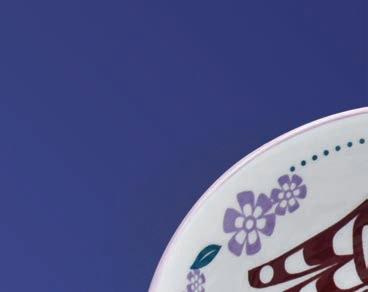
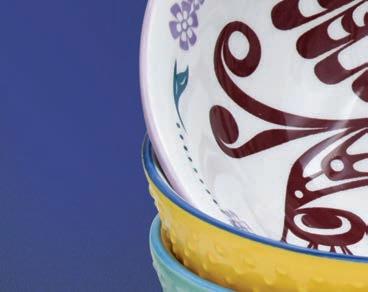

Friday, December 6, through Sunday, December 8
